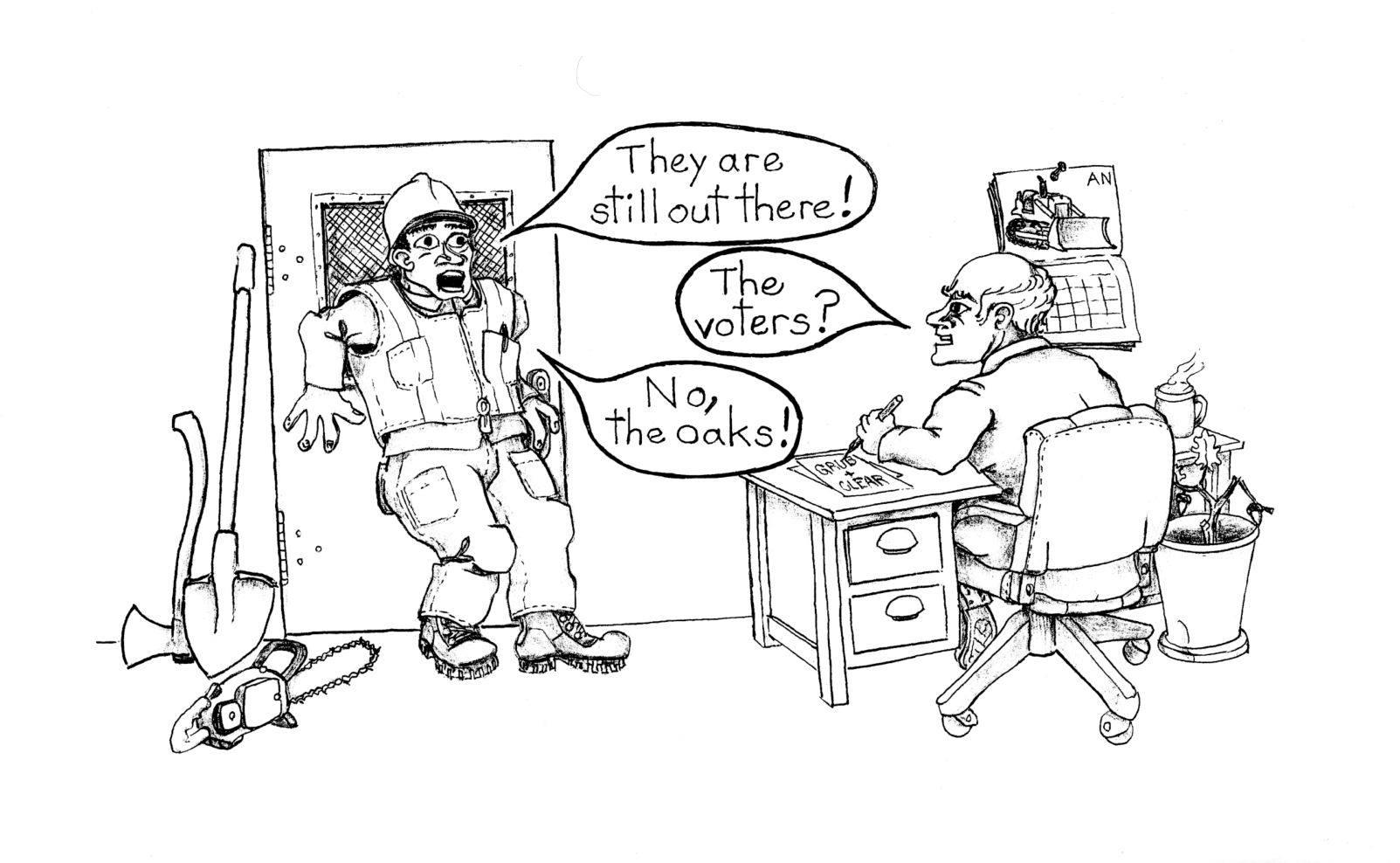“Farming in Napa now is not what farming meant in 1968,” Conaway says. “Now farming is a real estate deal. The innocence of Eden is gone.”
Does Napa Need to Choose Between Grapevines and Oak Trees?
Napa Valley is known for both its gorgeous acres of vineyards and its rugged, oak-covered hillsides. But do residents need to choose between vines and trees?
Rich People Are Ruining Wine … and Napa Valley is forever changing as a result.
Vintner is a word that implies a knowledge of vines, husbandry, and winemaking, and a significant amount of physical labor. Not so the lifestyle vintner. It is a somewhat deprecating honorarium for mostly wealthy individuals with none of the above.
Property rights redux
The property rights argument, as Mr. Smith presents it here, seems more a philosophical thing, an indignation that government should curtail his rights. Get over it. We live in a world of laws that proscribe our rights, and while there may be bad ones, there are also good ones, like the Ag Preserve. You may end up with a little less wealth under the Watershed Initiative - though I doubt it - but as with the Ag Preserve, Napa will be a better environment in which to live.
Wine-searcher review: Napa Sells its Soul to Developers
Wine-Searcher writer, W. Blake Gray, reviewed James Conaway's upcoming book "Napa at Last Light". He describes the theme of the Napa historian's three books that culminate in a dark assessment of the loss of agricultural focus, corruption, and a change in the business model from Ag to winemaking to tourism to real-estate flipping.
"Vineyards have become stalking horses for houses, and for ways for lifestyle vintner wannabes to get a toehold," Conaway told me by phone from his home in Washington, DC. "The valley is over-planted for the water table. The hillsides and mountainsides are part of the historic provenance of this place. It is time to say, no more carving out of vineyards in the watershed, for environmental reasons and aesthetic reasons."
Napa County voters to decide how vineyards can be planted among oaks
Napa County voters will decide June 5 on a ballot measure that backers say is needed to limit tree removal in the name of vineyard development.
Dunne: Conaway's third Napa narrative asks whether Napa can remain true to agrarian ideal or will be a wine themed Disneyland
From his visits he has harvested three books: “Napa: The Story of an American Eden” in 1990; “The Far Side of Eden: New Money, Old Land, and the Battle for Napa Valley” in 2002; and now “Napa at Last Light: America’s Eden in an Age of Calamity” (Simon & Schuster, 336 pages, $26), to be released March 6.
With his books, focused more on social history than wine, Conaway has been working to determine whether Napa Valley is on course to retain its agrarian traditions and culture – a preserved and cherished agricultural Yosemite, if you will – or morph into a viticultural Disneyland, vineyards as sideshows, wineries as thrill rides.
What are they afraid of?
Cartoonist Tony Norris ponders why certain developers are so vehemently opposed to protecting the watershed woodlands.
Is Napa running out of land for vineyards?
But as the Napa Valley floor grows ever more crowded, and its land values skyrocket, activity moves outward. Like Coombsville before it — Napa’s youngest sub-AVA, long neglected until a recent surge of interest — Pope Valley is the latest Napa region to rise from obscurity for the simple reason that it still has plantable land.
It may also be Napa’s last.
Press Release
After Cooperating with Proponents on Watershed Protection Initiative, Napa Valley Vintners Reverse Course
Napa – In an abrupt reversal of its initial support for the Napa County Watershed and Oak Woodland Protection initiative, the Napa Valley Vintners (NVV) have voted to oppose the effort. The initiative, which will be on the June ballot, will enhance protections for the oak woodlands and streams that are part of Napa Valley hillsides and play a vital role in securing water supplies, water quality, the visual appeal of the Napa Valley, and the health of our local ecosystems.


